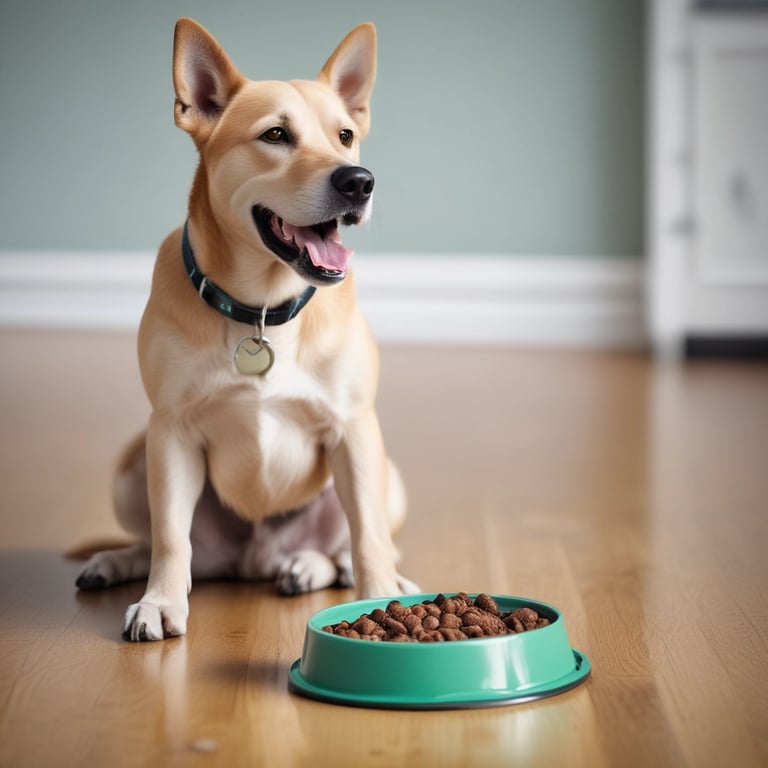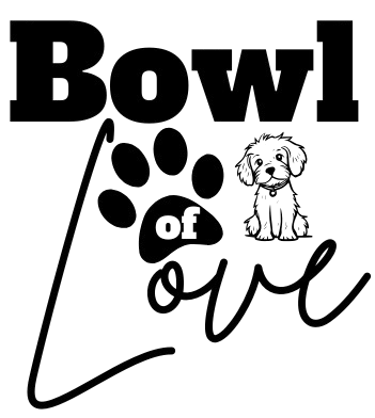Complete Guide to Raw Feeding
Essential Benefits, Risks, and Safe Implementation Strategies for Pet Owners
DOG NUTRITION TIPS
9/30/20258 min read
Complete Guide to Raw Feeding
At Bowl of Love, we sometimes recommend trusted products. If you choose to purchase through our links, we may earn a small commission at no additional cost to you. Thank you for supporting our mission to bring healthier food choices to dogs everywhere.
Raw feeding for pets involves providing uncooked meat, bones, organs, and vegetables instead of commercial kibble or canned food. This feeding approach has gained popularity among pet owners seeking more natural nutrition options for their dogs and cats.
Pet owners who switch to raw diets often report improvements in their animals' coat quality, energy levels, and digestive health, though the practice requires careful planning and understanding of nutritional needs. Raw feeding supporters believe this method more closely mimics what animals would eat in their natural environment.
The decision to feed raw requires weighing potential benefits against safety risks and learning proper preparation techniques. Understanding the nutritional requirements, sourcing quality ingredients, and following food safety protocols become essential skills for pet owners considering this feeding method.
If you would like to read further into raw feeding for your dogs, we recommend this book from Amazon to anyone who is curious.
Understanding Raw Feeding for Pets
Raw feeding involves providing pets with uncooked meat, bones, organs, and vegetables instead of processed commercial foods. This approach aims to replicate the natural diet of wild animals through specific feeding protocols and careful nutritional planning.
What Is Raw Feeding?
Raw feeding is a dietary approach where pet owners provide their animals with unprocessed, uncooked foods. The diet typically consists of raw muscle meat, organ meat, bones, and sometimes vegetables or fruits.
The practice stems from the belief that pets should consume foods similar to what their wild ancestors ate. Advocates argue that cooking destroys essential nutrients and enzymes that pets need for optimal health.
Raw feeding typically includes:
Raw muscle meat (chicken, beef, lamb, fish)
Raw meaty bones (these bones from Amazon is our favorite)
Organ meat (liver, kidney, heart)
Some vegetables and fruits
Minimal to no processed ingredients
Pet owners who choose raw feeding often prepare meals at home or purchase commercially prepared raw foods. The diet requires careful planning to ensure nutritional balance and food safety protocols.
Types of Raw Diets
Several raw feeding approaches exist, each with different philosophies and preparation methods. The most common types include BARF, prey model, and commercial raw diets.
BARF (Biologically Appropriate Raw Food) includes raw meat, bones, organs, vegetables, fruits, and sometimes dairy or grains. This approach aims for approximately 70% raw meat and bones with 30% vegetables and supplements. A small digital kitchen scale like this Greater Goods scale from Amazon is a must for getting portion sizes right.
Prey Model Raw focuses on whole prey animals or recreating whole prey ratios. The typical formula consists of 80% muscle meat, 10% bone, 5% liver, and 5% other organs.
Commercial raw diets are pre-made frozen or freeze-dried options. These products are formulated to meet nutritional standards and often undergo safety testing.
Some pet owners combine approaches or create customized versions based on their pet's specific needs and preferences.
How Raw Feeding Differs from Conventional Pet Food
Raw feeding differs significantly from conventional pet food in ingredients, processing, storage, and preparation requirements. These differences impact nutritional content, safety considerations, and feeding practices.
Processing differences are fundamental. Commercial pet foods undergo high-temperature cooking, extrusion, or canning processes. Raw diets maintain foods in their natural, uncooked state.
Ingredient composition varies substantially. Conventional foods often contain grains, preservatives, and processed meals. Raw diets emphasize fresh, whole food ingredients without artificial additives.
Storage and handling requirements differ greatly. Conventional dry foods can be stored at room temperature for months. Raw foods require refrigeration or freezing and have shorter shelf lives. (We use these Rubbermaid containers from Amazon to store pre-portioned meals—it makes raw feeding much less messy)
Preparation time increases significantly with raw feeding. Pet owners must plan meals, handle raw ingredients safely, and often supplement to ensure nutritional completeness.
Health Benefits of Raw Feeding
Raw feeding provides several measurable improvements in pet health. Dogs often show enhanced coat shine, reduced dental tartar buildup, and firmer stools within weeks of transitioning to raw diets.
Improved Coat and Skin Health
Raw diets contain natural omega-3 and omega-6 fatty acids from whole prey sources. These essential fats support skin barrier function and coat development more effectively than synthetic supplements.
Dogs fed raw diets typically develop shinier, softer coats within 4-6 weeks. The natural oils from raw meat and fish provide direct nutrition to hair follicles.
Skin conditions like dryness, excessive shedding, and minor irritations often improve on raw diets. The increased moisture content in raw food helps maintain proper hydration levels in skin cells.
Raw feeding eliminates many artificial preservatives and fillers found in processed foods. These additives can trigger allergic reactions or skin sensitivities in some dogs.
Dental and Oral Hygiene Advantages
Raw meaty bones provide natural teeth cleaning action through mechanical scraping. The chewing process removes plaque buildup and exercises jaw muscles effectively.
Tartar formation decreases significantly when dogs consume raw bones regularly. The abrasive texture of bone naturally polishes tooth surfaces during consumption.
Dogs on raw diets typically have fresher breath compared to those eating processed foods. Raw meat lacks the starches and sugars that feed harmful bacteria in the mouth.
Gum health improves through increased blood circulation from chewing raw bones. This natural exercise strengthens periodontal tissues and reduces inflammation.
Digestive Health and Stool Quality
Raw diets contain natural digestive enzymes that remain intact without heat processing. These enzymes aid in breaking down proteins and fats more efficiently than cooked alternatives.
Dogs produce smaller, firmer stools on raw diets due to higher nutrient absorption rates. Less waste means the body utilizes more of the consumed food.
Raw feeding often reduces digestive issues like gas, loose stools, and stomach upset. The species-appropriate protein sources are easier for dogs to process naturally.
The natural pH levels in raw meat create optimal conditions for beneficial gut bacteria. This supports immune system function and nutrient absorption throughout the digestive tract.
Risks and Safety Considerations
Raw feeding presents several health risks that pet owners must understand and manage. These include potential nutritional deficiencies, bacterial contamination, allergic reactions, and the need for proper food handling protocols.
Nutritional Imbalances
Calcium and phosphorus imbalances represent the most common nutritional risk in raw diets. The ideal ratio should be 1.2:1 calcium to phosphorus. Diets heavy in muscle meat without adequate bone content create dangerous deficiencies.
Vitamin and mineral deficiencies occur when owners feed limited protein sources. Dogs require vitamin D, vitamin E, and zinc in specific amounts. Cats need taurine, arachidonic acid, and vitamin A from animal sources.
Protein excess can stress kidneys in older pets or those with existing health conditions. Young, active animals typically handle higher protein levels better than sedentary or senior pets.
Essential nutrients often missing include:
Vitamin D (found in fish and liver)
Iodine (from sea vegetables or supplements)
Manganese (from organ meats)
Vitamin E (antioxidant protection)
Pathogen Contamination
Salmonella affects 20-30% of raw pet foods according to FDA studies. This bacteria causes severe gastrointestinal illness in both pets and humans who handle contaminated food.
E. coli contamination occurs frequently in ground raw meat products. O157 strain produces particularly dangerous toxins that can cause kidney failure.
Listeria monocytogenes grows at refrigerator temperatures and poses serious risks to pregnant women, elderly individuals, and immunocompromised family members.
High-risk foods include:
Ground meat products
Poultry (especially chicken necks)
Raw eggs
Unpasteurized dairy products
Parasites such as Toxoplasma gondii in raw pork and Trichinella spiralis require freezing at -4°F for specific time periods to eliminate.
Food Allergies and Sensitivities
Novel protein reactions can develop when introducing new meat sources too quickly. Common allergens include beef, chicken, lamb, and fish proteins.
Gastrointestinal upset manifests as diarrhea, vomiting, or excessive gas during diet transitions. Gradual introduction over 7-10 days reduces these reactions.
Skin reactions including itching, hot spots, or ear infections may indicate food sensitivities. These symptoms can take 2-8 weeks to appear after exposure.
Cross-contamination between different protein sources during processing can trigger reactions in sensitive animals. Single-source proteins help identify specific allergens.
Safe Handling and Storage
Freezing protocols require -4°F temperatures for 2-3 weeks to eliminate parasites. Freezer temperatures above 10°F do not provide adequate pathogen control.
Thawing procedures must occur in refrigerators, not on countertops. Cold water thawing requires water changes every 30 minutes.
Surface sanitization with bleach solutions (1 tablespoon per gallon water) eliminates bacteria from cutting boards, knives, and preparation areas.
Storage guidelines:
Refrigerated raw food: 2-3 days maximum
Frozen raw food: 6-9 months for optimal quality
Separate storage from human food
Dedicated utensils for raw food preparation
Hand hygiene requires washing with soap for 20 seconds after handling raw meat and before touching other surfaces or family members.
How to Safely Implement a Raw Diet
Successful raw feeding requires careful ingredient selection, proper nutrient balancing, gradual dietary transitions, and professional veterinary guidance. These four critical components ensure pets receive optimal nutrition while minimizing health risks.
Selecting Quality Ingredients
Pet owners must source ingredients from reputable suppliers who follow strict food safety protocols. Human-grade meats from USDA-inspected facilities provide the highest quality and safety standards.
Fresh ingredients should display bright colors, firm textures, and lack any off-odors. Meat should feel cold to the touch and show no signs of discoloration or sliminess.
Storage requirements include:
Freezing meat for 48-72 hours before feeding
Maintaining freezer temperatures at 0°F (-18°C)
Using frozen ingredients within 6 months
Thawing meat in refrigerator, never at room temperature
Avoid ingredients from unknown sources, expired products, or meat that has been temperature-abused. Wild game and roadkill carry higher parasite risks and require extra precautions.
Organic and grass-fed options provide superior nutrient profiles but cost significantly more than conventional alternatives. Local farmers markets often offer high-quality options at competitive prices.
Balancing Nutrients
Raw diets must contain proper ratios of protein, fat, vitamins, and minerals to prevent nutritional deficiencies. The basic prey model follows 80% muscle meat, 10% edible bone, and 10% organs.
Essential components include:
Muscle meat: Provides primary protein and amino acids
Organs: Liver supplies vitamin A, kidney provides B vitamins
Bones: Calcium and phosphorus sources
Fat: Energy and fat-soluble vitamin absorption
Calcium-to-phosphorus ratios should maintain 1.2:1 to 1.4:1 for optimal bone development. Too much phosphorus relative to calcium causes skeletal problems in growing animals.
Variety prevents nutritional gaps by rotating different protein sources weekly. Include beef, chicken, turkey, fish, and lamb to provide diverse amino acid profiles.
Supplements may be necessary for certain nutrients like omega-3 fatty acids, vitamin E, or specific minerals depending on ingredient selection and pet needs.
Transitioning Pets to Raw Feeding
Gradual transitions over 7-14 days prevent digestive upset and allow beneficial gut bacteria to adapt. Start by replacing 25% of current food with raw ingredients.
Day 1-3: Mix 25% raw with 75% current food. Monitor for loose stools, vomiting, or appetite changes during this initial phase.
Day 4-7: Increase to 50% raw and 50% current food. Some pets may experience temporary digestive adjustments during this period.
Day 8-14: Progress to 75% raw and 25% current food, then complete the transition to 100% raw feeding.
Signs of successful transition:
Firm, smaller stools
Improved coat condition
Stable energy levels
Maintained appetite
Pets with sensitive stomachs may require slower transitions spanning 3-4 weeks. Senior animals or those with existing health conditions need extra monitoring during dietary changes.
Consulting with a Veterinarian
Veterinary consultation before starting raw feeding ensures the diet suits individual pet health needs. Some conditions like pancreatitis or kidney disease require modified approaches.
Schedule nutritional consultations every 3-6 months to monitor body condition, weight, and overall health markers. Blood work can reveal potential nutritional deficiencies before clinical signs appear.
Find veterinarians experienced with raw feeding through holistic veterinary associations or raw feeding communities. Traditional veterinarians may lack specific raw diet knowledge.
Important health considerations:
Pregnant or nursing animals need increased calories
Growing puppies require precise calcium-phosphorus balance
Senior pets may need easily digestible proteins
Immunocompromised animals face higher infection risks
Document feeding records, including ingredients, quantities, and any health changes. This information helps veterinarians make informed recommendations about diet modifications.
If full raw feeding feels too overwhelming, try freeze-dried raw like Primal Freeze Dried Raw Dog Food—it’s shelf-stable, less messy, and still offers many benefits.












Connect
Reach out for support and inquiries.
Subscribe
contactbowloflove@gmail.com
© 2025. All rights reserved.
